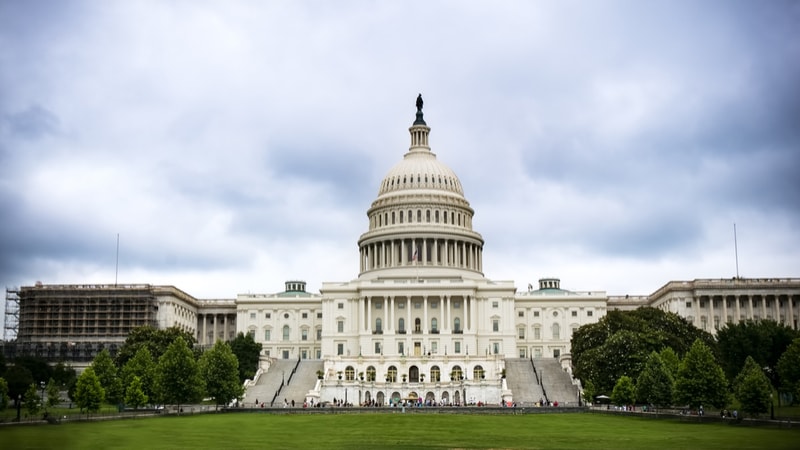
FITARA, FedRAMP, and 21st Century IDEA are all shaping Federal IT modernization efforts, explained Rich Beutel and Mike Hettinger at ServiceNow’s Knowledge 2019 Conference.
The biggest modernization roadblock? Federal agencies today spend 80 cents of every IT dollar to maintain legacy systems.
Beutel, managing principal at Cyrrus Analytics LLC; and Hettinger, founder and principal of Hettinger Strategy Group lobby for change. They support policy initiatives that set the transformation agenda and drive modernization forward.
Beutel says there are tremendous opportunities to deliver improved services and new efficiencies.
Consider, the Department of Defense uses 40 percent of all computing resources across the government. However, just three percent of these resources are in the cloud today.
FITARA is a giant step forward. “It’s the biggest reform to the way the government consumes IT in 20 years,” Beutel noted. “The act empowers Federal CIOs to be agents of change.”
Previously, CIOs “had in some cases no control over their budgets, and couldn’t authorize their hires,” he said. “Now CIOs have the legislative and legal authority to be true partners with the business”
The Federal IT community agrees FITARA is making a difference. In a MeriTalk survey just published, 78% of Federal IT executives confirm FITARA has accelerated Federal IT modernization. And, 68% say FITARA has improved Federal IT efficiency.
While the news isn’t always positive, the FITARA scorecard (the CIO report card) publishes twice a year and provides transparency into modernization efforts. “We can see who is improving, who we can learn from, and where we need to put more effort,” says Beutel.
Hettinger points to the 21st Century IDEA as another important modernization driver. The goal was to get the government to think differently about how it uses IT.
As an example of the challenges, Hettinger points out that many websites in the Federal government are outdated. They include dead links, links that go to static PDFs, disjointed workflows around back-office systems, etc.
“We can change the mindset in the Federal government by pushing to modern 21st-century digital government,” says Hettinger. “21st Century IDEA is coming on the back of the Modernizing Government Technology (MGT) Act, which got everyone thinking about modernization generally.”
The Act was signed into law in December 2018. It requires agencies to ensure their websites are accessible, they use an industry-standard secure connection, and they have a consistent appearance. Agencies will make all paper-based forms available in a digital format within two years and submit a plan to accelerate the use of digital signatures. CIOs will coordinate to ensure adequate funding for bill initiatives.
“Federal leaders recognize the importance of improving employee and citizen experiences,” says Bob Osborn, Chief Technology Officer (Federal), ServiceNow. “21st Century IDEA encourages agencies to transition to digital workflows, gain new abilities to analyze and plan, and most importantly – deliver responsive citizen services.”
“21st Century IDEA is about modernizing the way government works,” said Hettinger.
While cloud is central to Federal modernization efforts, it’s not news that security concerns have slowed cloud adoption.
The Federal Risk and Authorization Management Program (FedRAMP), a security certification for Federal cloud providers, was put in place to accelerate secure cloud adoption but, “agencies are not using FedRAMP in a reciprocal way, the way it was envisioned,” says Hettinger.
FedRAMP is designed to let agencies “qualify once, use many times,” adds Beutel. While many companies are getting FedRAMP certified, the challenge is that certifications are not accepted government-wide. The process still takes too long and costs too much.
Hettinger says there are approximately 125 companies with FedRAMP certification today. But, just three percent, including services provided by ServiceNow in Microsoft’s Azure Government Cloud, have achieved the more stringent FedRAMP High certification.
Osborn says that ServiceNow will also achieve FedRAMP High and Defense Information Systems Agency (DISA) Impact Level (IL) 4 this year.
Last year, Hettinger and Beutel worked with Congressman Gerry Connolly to introduce a FedRAMP reform to speed the program and reduce costs. They plan to reintroduce this year. “The draft legislation rationalizes the program, speeds it up, and resources it properly. And, importantly, the bill creates the presumption that if you get an agency ATO (Authorization to Operate), other agencies should honor it. No reinventing the wheel every single time,” Beutel said.
Looking forward, Beutel said new procurement fast tracks are starting to help agencies address modernization issues. One is the Other Transaction Authority (OTA), gaining momentum in the Department of Defense. “[OTA is] a way to buy IT very fast, using rapid prototyping and iterative DevSecOps development procedures,” said Beutel. “You implement bite-size nuggets and deliver code iteratively over time.”
A final related step is ensuring procurement teams understand how to procure new subscription-based cloud services. Procurement officials need education about the new models, and there are resources available. For example, Beutel says OMB offers training for contracting officers that focuses on the “X-as-a-Service” model.
Many believe the Federal Acquisition Regulation (FAR) is rigid. But, “the FAR is not meant to be prescriptive,” Beutel says. “It offers recommended guidelines. Acquisition teams should think about out-of-the-box solutions that fit the agency.”
Beutel and Hettinger hope the use of the fast track procurement techniques will continue to grow. They will continue to advocate for modern, efficient, secure government services.
Osborn says the progress made so far is encouraging and lays the groundwork for more. He added, “We are all working to create opportunities for transformation.”
